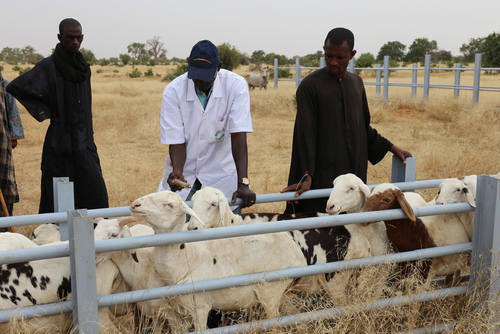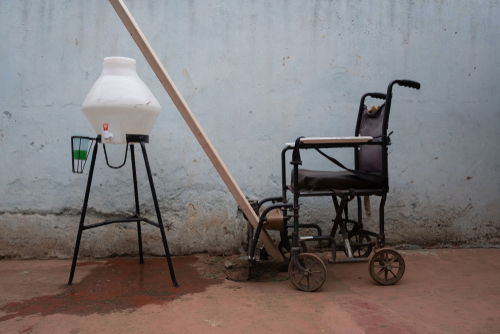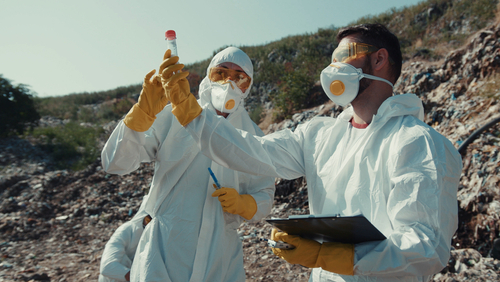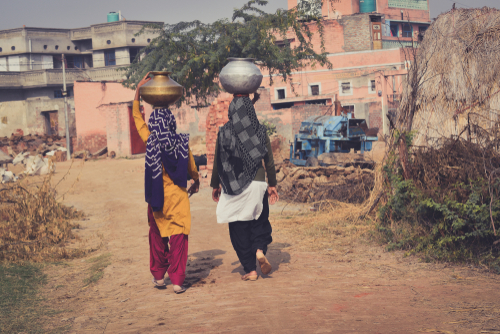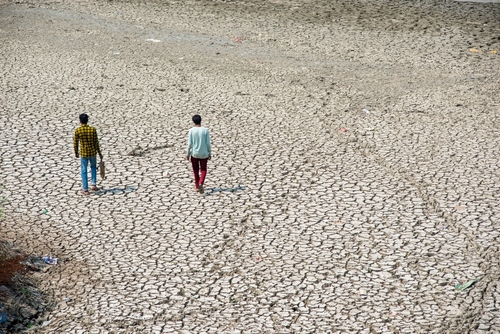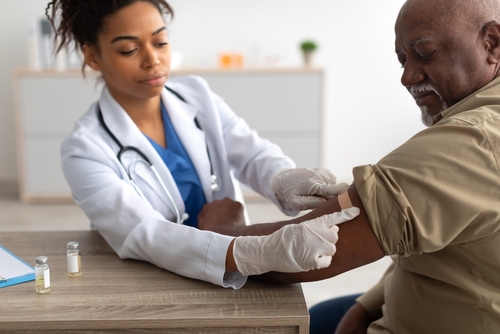August 07, 2023

New MAAP reports highlight low bacteriology testing capacity in 14 African countries.
The One Health Trust worked as the technical lead on the Mapping AMR and AMU Partnership (MAAP) consortium with Africa CDC, the African Society for Laboratory Medicine, and other partners. The consortium published new country reports detailing the antimicrobial use and resistance measures of 14 African Union Member States based on surveillance data collected between 2016 and 2019. The reports reveal a lack of access and inappropriate use of antimicrobial drugs. Just four drugs accounted for more than two-thirds of all antibiotics used in healthcare facilities. Few laboratories conduct bacteriology testing across the reporting countries, highlighting a limited capacity to collect AMR-related data.[African Society for Laboratory Medicine]
Increasing the recognition of the appearance of oral antibiotics can foster responsible antibiotic consumption.
The Antibiotic Access and Use (ABACUS) project, conducted in six low- and middle-income countries (LMICs) in 2017, found that medicine suppliers and community members were confused when trying to physically identify antibiotics. The physical appearance of antibiotics remains relatively unexplored as a tool to improve their identification and distinction from other drugs, such as painkillers, which were often mistaken for antibiotics in ABACUS’ findings from Vietnam and Ghana. Five roundtable discussions with stakeholders and experts revealed that barriers to improving antibiotic identification included limited data on the burden of misidentified antibiotics and the cost of implementing a medicine appearance change. [The Lancet Global Health]
Global WASH access inequality impacts gender disparities.
The World Health Organization and UN Children’s Fund Joint Monitoring Programme for Water, Supply, Sanitation, and Hygiene(WASH) released a report on national, regional, and global estimates for WASH in households between 2000 and 2022, with a special focus on the impact of gender inequalities. The report revealed that WASH data is typically collected at the household level, rather than at the individual level, preventing researchers from accounting for gender-dependent differences. Globally, 2.5 billion people have gained access to safely managed sanitation services since 2000; however, 2 billion people still lacked safe drinking water in 2022. The different household roles occupied by women and men due to gender norms cause girls and women to predominantly carry out domestic tasks and to ensure a sufficient drinking water supply at home. Achieving universal access to WASH services by 2030 would require a five-fold increase globally at the current rate of progress. [WHO]
Australia’s National AMR Action Plan lacks a way to measure the progress of its implementation.
A systematic analysis of Australia’s National Action Plan (NAP) on antimicrobial resistance (AMR) revealed that Australia’s NAP was congruent with the Global Action Plan, created by the WHO, FAO, and OIE in 2015, but there was a notable absence of strategic objectives or numerical goals that could be used to track the progress of NAP implementation. Categories for activities aimed at combating AMR and listed in the NAP documents included research and innovation (12.5 percent), surveillance (11.5 percent), and equity (0.9 percent). [Journal of Public Health]
Judicious antibiotic use in hospital settings improved after quality interventions in six Ugandan facilities.
Researchers established hospital antimicrobial stewardship (AMS) programs and interventions in six hospitals in Uganda using continuous quality improvement (CQI) techniques to target conditions often associated with inappropriate antibiotic use including urinary tract infections (UTIs), upper respiratory tract infections (URTIs), and surgical antibiotic prophylaxis (SAP). Among 7,037 patients with UTIs, the proportion of patients on one antibiotic for treatment increased from 48 percent pre-intervention to 73.2 percent, with a 19.2 percent reduction in the number of antimicrobials prescribed per UTI patient. There was an observed increase in the use of nitrofurantoin in the post-intervention phase to treat uncomplicated UTIs. CQI programs in other health facilities in Uganda can bolster AMS for appropriate antibiotic use. [BMJ Open]
A lower abundance of resistance genes is associated with improved WASH access.
Researchers investigated the relationship between community access to WASH services and the burden of antibiotic resistance in humans using human fecal metagenomes and associated household data on drinking water and sanitation access. A lower abundance of antibiotic resistance genes (ARGs) was positively correlated with greater access to improved water and sanitation services. The highest abundance of ARGs was found in sub-Saharan Africa, followed by Southeast Asia and Central and South America. Urban regions in Africa had the highest total ARGs according to wastewater surveillance data. Tetracycline resistance was prevalent in all geographical settings, as well as a high abundance of genes conferring resistance to beta-lactam antibiotics. While a causal relationship was not established, these findings suggest that expanding access to both drinking water and sanitation at the community level could be an effective strategy for reducing the transmission of ARGs and thereby antimicrobial resistance. [The Lancet Microbe]
Assessing the risks and benefits of an intergovernmental panel for One Health
A health policy brief examined the benefits and risks of an intergovernmental panel for One Health (IPOH) in relation to pandemic prevention, preparedness, and response (PPR). The IPOH would aim to facilitate knowledge uptake in policy-making to address the emergence and re-emergence of infectious diseases at the human-animal-environment interface. Some of the values of the IPOH would include the provision of a unified voice from the scientific community, identification of knowledge gaps, promotion of data sharing across borders, and coordination across One Health platforms. Conversely, risks of the panel could include subjugation to governments’ priorities, slower delivery of PPR outcomes, and complex coordination efforts with a number of institutions, governments, and other stakeholders. [The Lancet Global Health]
Outbreaks of Candida auris infections were associated with COVID-19 surges in Israel.
A retrospective observational study on hospital-acquired Candida auris infections in four Israeli healthcare facilities between 2014 and 2022 identified a 30-fold increase in 2021 corresponding to surges in COVID-19 hospitalizations. The outbreak initiated in COVID-19 patients on mechanical ventilation and then spread to ventilated non-COVID-19 patients and non-ventilated patients. A Candida auris variant imported to Israel in 2016 accounted for nearly 50 percent of infections and demonstrated 100 percent resistance to fluconazole and 74 percent resistance to voriconazole.[Emerging Infectious Diseases]
Wildland-urban interfaces are hotspots for human-environmental conflict across the globe.
The wildland-urban interface (WUI), where human habitation and commerce intermingle with wildlands, is a global phenomenon encompassing 4.7 percent of the earth’s land surface and home to half its population. Human-environment conflict is concentrated in the WUI where wildfires destroy homes and kill people, habitat is fragmented, biodiversity is lost, and zoonotic disease is spread. High spatial resolution mapping relating dominant land cover to wildfire incidence over the past two decades identified WUI on all continents revealed diversity in population density, biomass quantity, and vegetation type. Wildfires affect the most people in WUI. Future use of high-resolution maps will aid in the assessment of wildfire risk and associated social vulnerability based on local land management practices, ecological and economic concerns, natural disaster preparedness, and climate factors. [Nature]
Image from Canva

